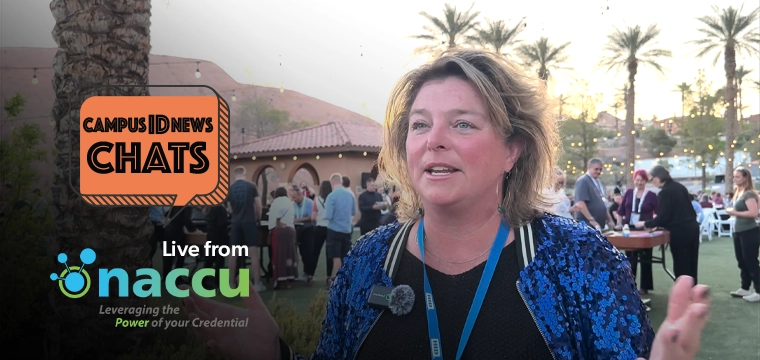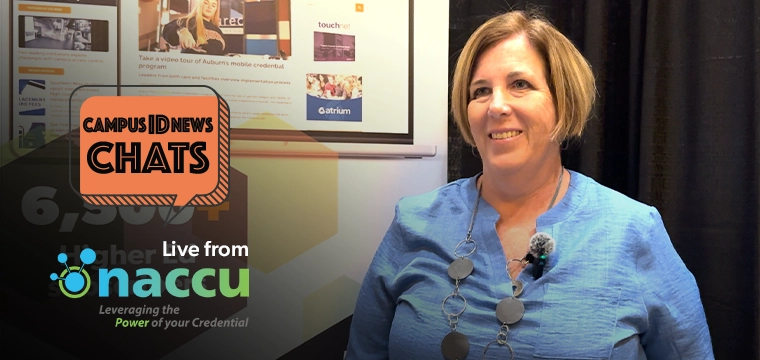
Following the controversial report from U.S. PIRG, Congress investigates both campus card banking partnerships and financial aid dispersal. Is the future of these products in doubt?
As campuses have embraced electronic distribution of financial aid and banking services tied to student ID cards, a question has emerged. Are students forced to pay more for the convenience? The U.S. Public Interest Research Group’s Education Fund says ‘yes,’ suggesting that college students have been unfairly targeted for extra fees to the financial benefit of both banks and universities.
But vendors serving the higher education community and many campus administrators vehemently deny these allegations. They argue that campus-focused financial products actually save students money and offer significant benefits.
In a June 2012 report entitled “The Campus Debit Card Trap: Are Bank Partnerships Fair to Students?” the U.S. PIRG asserts that university and bank partnerships offering financial products to students are unfair and should be curtailed. The researchers examined both student ID card and bank partnerships as well as student loan disbursements that are tied to a bank account, debit card or reloadable prepaid card.
Officials in Washington have taken note of the report. This summer Sen. Dick Durbin (D-Ill.) and two other congressmen sent letters to 15 financial institutions and third-party financial providers that supply campus debit and prepaid cards to colleges and universities.
The financial institutions were asked to provide a list of all colleges and universities with which they provide debit or prepaid card services to students. They also requested copies of the individual contracts, a breakdown of debit or prepaid card fees and the terms provided to students at each institution.
According to the release posted on the Web site of the National Association of College and University Business Officers, the three legislators “expressed concern about fees” associated with prepaid or debit cards provided to colleges. They called for the contracts to be made public.
Providers making
proactive fee changes
The companies that provide these services have been forced to take notice. Though many have called the report misleading for lumping together very different financial products and the spectrum of providers, some have even begun to announce changes to their financial aid dispersal products.
Heartland Payment Systems eliminated three separate fees from its Acceluraid electronic financial aid disbursement solution–a $30 dispute fee, a $1 bill pay fee, and a 50-cent card-to-card transfer fee.
In a release announcing the fee changes, Ron Farmer, executive director of campus solutions and micropayments for Heartland Payment Systems, acknowledged that campus administrators are feeling the heat about student expenses. “Heartland is helping them and the student,” he said, “by eliminating these fees so both parties have fewer potential expenses to worry about.”
Higher One, the most vilified in the financial aid discussion, has started to make changes too. The company released a statement that it intends to comply with the Pew Charitable Trust guidelines for “Safe Checking in the Electronic Age,” that calls for financial institutions to standardize their disclosure forms.
Another change eliminates the often-criticized fee for PIN-based debit transactions for two of Higher One’s account offerings. The company’s two accounts that assess a monthly fee–Flex at $5.95 per month and Premier at $9.95 per month–do not charge for PIN-based transactions. The free basic OneAcccount continues to include a .50-cent fee for PIN-based transactions made at the point of sale.
It also clarified its over draft protection/non-sufficient fee policies. Higher One does not offer overdraft protection on any accounts. This is a form of credit and Higher One has never issued any lines of credit to customers.
The company does still assess a $29 non-sufficient funds fee if a student writes a check or has a recurring payment set up on an account that doesn’t have the funds available, says a company spokesperson. If a student attempts to make a transaction using the card and the funds are not available they will not be charged the fee, instead the transaction will be declined. The spokesperson told CR80News that other fee changes are on the horizon.
The U.S. PIRG report states that nearly 900 schools with more than nine million students nationwide have partnerships with banks or other financial firms. These include 32 of the 50 largest public four-year universities, 26 of the 50 largest community colleges and six of the 20 largest private not-for-profit schools. In total, these banking partnerships reach 42% of the student population.
Though the U.S. PIRG contends that universities and financial services companies make a lot of money from these partnerships, not all parties agree.
Most financial institutions working with campus card programs describe long-term relationship building with young, soon-to-be professionals as the driver for these programs. Short-term profit windfalls simply don’t exist, according to representatives from several of these institutions.
Wells Fargo has relationships with 40 colleges and universities across the country and views college partnerships as a way to teach new users about financial services products. “[We] are being introduced to students, many looking for their first financial institution. We serve their needs, and hopefully they’ll be lifelong customers and build healthy financial habits,” says Richele J. Messick, spokesperson for Wells Fargo.
Most of Wells Fargo’s university partnerships are connected to student ID card services rather than dedicated exclusively to financial aid delivery.
The U.S. PIRG report states that when student ID services become connected to financial options such as open-loop debit cards, it “may mean that a bank/financial aid firm has taken over the process of issuing IDs at the school.”
Wells Fargo contends that this is not the reality of the relationship and that the banking aspect of a student ID is optional. “The student is the one who has the choice,” says Messick. “You don’t have to link a campus ID to a Wells Fargo account.” When the student opts not to turn on the banking feature of an ID, it still contains all the other campus services, but just doesn’t function as a debit card.
The crux of the U.S. PIRG report focuses on fees related to these types of cards as well as debit cards related to student loan disbursements. The report says that universities are increasingly moving to debit cards as a way to give students their loan money, but by using cards as a form of disbursement, students are at risk of incurring fees.
PIRG sees this as a problem when the dollars in question comes from taxpayer-provided grants and federal loans. U.S. PIRG says this money is designed to go to lower income students who can’t afford the fees tied to these accounts.
The Department of Education allows for federally funded student loans to be disbursed via a payment card but stipulates that this is only acceptable “as long as the issuing bank provides conveniently located fee-free ATMs.” The idea is that students should have free and unfettered access to their aid dollars.
The U.S. PIRG report contends that “convenient” and “fee-free” ATMs still cause problems when lines get too long or cash runs out.
It cites that Higher One has agreements at around 520 schools, but has just 600 ATMs in service. At peak disbursement times, the report claims students queue up in long lines to access their money free of charge, and demand can be greater than the supply of money. This forces some to incur fees of up to $5 because they end up using out-of-network ATMs to get their loan funds.
Since the report was released Higher One announced that more than 700 ATMs are in the field. The company says that if an institution’s Higher One ATM is not operational or is out of cash at any time, it will reimburse OneAccount holders at their request for up to $5 per day for fees charged at other ATMs.
In contrast to the report’s portrayal of students waiting 50 deep in line at a single fee-free ATM on a campus, most providers boast large ATM networks to support student accounts. U.S. Bank has 23,000 ATMs across the country, Wells Fargo has more than 12,000, and both Blackboard and Sallie Mae offer more than 43,000 surcharge-free ATMs via membership in the Allpoint Network.
Blackboard, a long time player in the closed-loop off-campus market with their BbOne offering, launched their financial aid delivery product called BlackboardPay in 2010. The company’s more recent entry to this specific service area gave them a different perspective on financial aid delivery, says Jeff Staples, vice president of market development for Blackboard.
“We committed to deliver a product that best helped students gain access to their Title IV funds,” says Staples. “We looked at the market and asked how we could best serve both the campus and the student … and not at the expense of one over the other.”
Blackboard points to the prepaid platforms from Money Network and Discover as “new tools” they were able to call upon in the creation of the BlackboardPay. These tools provide features they say are not typically found in older debit solutions. According to Staples, BlackboardPay doesn’t charge a PIN debit fee, there is no possibility of overdraft and there are no minimum balance or monthly service fees for active cardholders.
Students can access the funds at no cost in numerous ways:
“Seeking technical compliance with Title IV with a few hundred ATMs isn’t really the same as serving the students’ needs with more than 40,000 ATMs plus ATMs deployed on campus,” Staples says. “We think the campus and students deserve the best offering and fee schedule available, not something that’s simply better than average.”
Compelling students to opt for these branded debit cards is another unfair practice, cites the U.S. PIRG report because it opens up students, “already vulnerable as consumers in this area,” to the risk of incurring extra fees, such as hefty overdraft fees and PIN swipe fees.
This may be a young student’s first experience with a financial institution, and the report says that confusing fee structures for these accounts can cost students a lot of money in “hidden” fees.
Most providers of these services take offense to the concept that fees are hidden. Virtually all providers list fees online and provide documentation of fees at multiple points in the process. Financial accounts, like other services, are not free and have fees associated with them. Even so-called “fee-free” accounts typically have fees for out-of-the-norm activities or improper usage.
“Higher One is not a bank, so cannot speak for those banks named and examined in the study, but Higher One’s offerings do adhere to the fundamental principles discussed by U.S. PIRG in its study, including: 1) providing students with choices, 2) being transparent about how accounts are structured, and 3) enabling colleges and universities to comply with the Department of Education’s standing regulations as they relate to the electronic disbursement of Title IV funds to students,” says Miles Lasater, COO of Higher One in an e-mail statement.
The unfair fees described in the U.S. PIRG’s report are not unlike fees paid by traditional consumers for traditional banking accounts. Virtually all accounts charge for using foreign ATMs and for overdrafting an account. Many banks also charge traditional customers monthly fees for checking accounts. Some banks mitigate those fees for students by offering them accounts with lower fees than the institution’s traditional checking account.
At $3 a month, Wells Fargo’s college checking account is less than its next cheapest account, Value Checking, which costs between $7 and $9 per month. Other checking packages that combine savings and debit can cost $10 to $12 per month. The college account includes many benefits of other checking packages, such as checking, savings, a debit card, online bill pay, mobile banking and text account alerts.
Higher One’s entry-level checking account has no minimum balance requirements and no monthly fees. It doesn’t require a background check. “Many students find this appealing,” says Shoba Lemoine, spokesperson for Higher One.
Higher One OneAccount customers get a Debit MasterCard, which has a 50-cent fee for PIN-based transactions. “We encourage students to choose free signature-based transactions at the point of sale because they are protected with the MasterCard Zero Liability policy against fraudulent purchases and they are more cost-effective for Higher One. So this fee is avoidable and many students never incur it,” says Lemoine.
Still it is this fee that has caused a great deal of the negative attention to the Higher One offering, and some suggest this has led to the harsh view taken by U.S. PIRG and other media outlets on student financial account products in general.
General-purpose reloadable (GPR) cards, commonly called prepaid cards, are a rapidly growing product for campus card and financial aid delivery applications. According to the Federal Reserve, they are also the fastest growing electronic payment method in the U.S. The PIRG report takes a harsh view of these prepaid products citing a lack of government regulation and protections.
Describing the prepaid card industry as unregulated, the report cites “no real consumer protections by federal law” and “no protections to limit your liability.”
To the contrary however, bank-issued prepaid products are often treated with the same protections as other payment offerings. Several issuers of prepaid products mentioned in the report, suggest that painting prepaid cards with such as broad stroke is irresponsible and misleading. According to one provider, “it is true that prepaid industry is not regulated in the same way as credit and debit, but as a bank, all our prepaid users are protected in the same way as other card customers.”
Prepaid debit offers great tools as long as the platform is designed with the consumer in mind, says Blackboard’s Staples. “BlackboardPay accounts are FDIC insured and feature an extremely compelling fee schedule,” he adds. “It is a very consumer-friendly iteration of prepaid debit.”
Without exception, providers interviewed for this article categorized the U.S. PIRG report’s depiction of prepaid as inaccurate and misleading.
A number of parties–service providers, campuses, associations and publications–have both publicly and privately called into question the accuracy of the PIRG report. Perhaps the most frequently heard complaint was that the report seems to lump all student-facing financial services together.
According to a statement issued by the National Association of College and University Business Officers, “the U.S. PIRG report conflates the student aid refund process with debit-linked college and university campus cards.”
In reality, these are very different products. They are marketed differently to students, entered into with different drivers from the institution’s perspective, and priced differently for users.
NACUBO goes on to say the report, “fails to adequately recognize that students have a choice in deciding where and how to manage personal banking and financial transactions and that campus cards are offered for service, convenience and security.”
It is difficult to argue that efforts to contain tuition costs require the streamlining of administrative services. This is the fundamental reason that campuses first began to explore electronic delivery of financial aid. According to NACUBO, “the (PIRG) report misleads readers to believe that campuses profit by providing electronic refunds of student financial aid dollars.”
Most interviewed for this article agreed that cost savings can be achieved via these services. But they stressed that few campuses create new revenue streams.
Sources tell CR80News that these times under the microscope will likely result in stricter guidance from the Department of Education related to dispersal of financial aid dollars. The chance for actual legislation enacted from the Congressional investigation by Durbin and his colleagues is minimal. However, insiders suggest they can pressure the Education Department to act.
Most sources agree that as far as services and fees are concerned campus card banking partnerships have little to hide, and thus little to fear, from the current efforts.
The scrutiny related to the banking partnerships area of the campus financial arena will likely focus on universities receiving up front payments and revenue shares. “Though they may not be unfair, undeserved or even unethical, in the future campuses won’t want to touch them with a ten foot pole,” says one source.
CR80News Editor Zack Martin contributed to this report.




